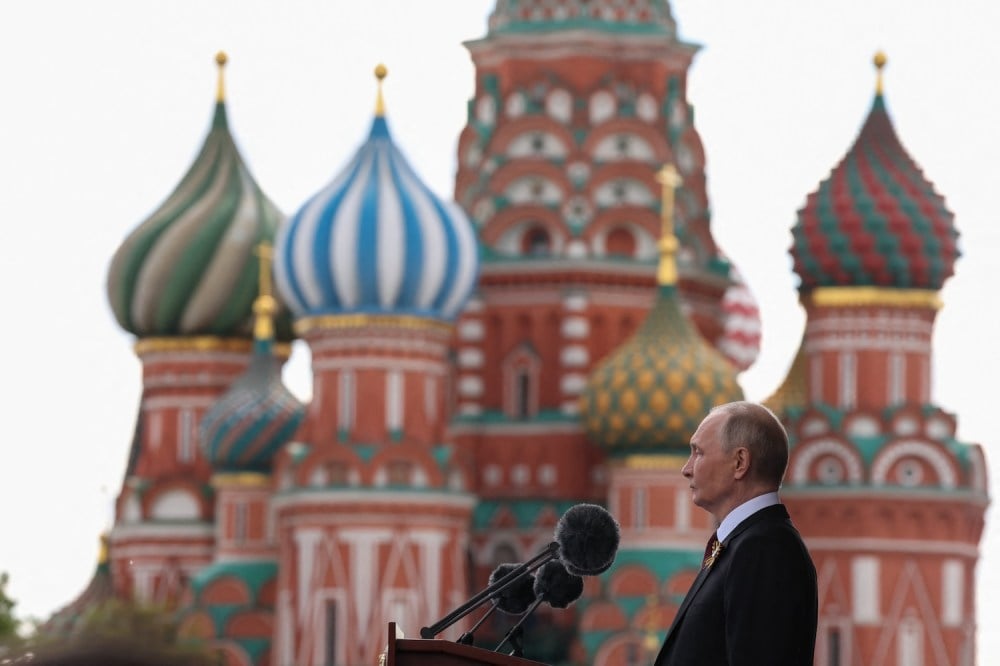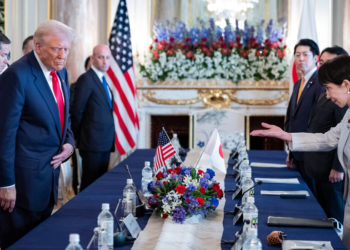When Russian President Vladimir Putin announced that his forces would observe a three-day cease-fire in Ukraine to mark the May 9 celebration of Victory Day, the supposed pause of the war was immediately disrupted by reports of continued Russian missile attacks on civilians in Ukraine. It was a familiar pattern. Previous cease-fire attempts have similarly collapsed within hours, including the 30-hour “Easter truce” in April, which saw nearly 3,000 violations by Russian forces, according to Ukrainian officials.
So why does Russia continue to propose cease-fires that it does not intend to uphold?
Rather than expressing actual policy and intent, the Kremlin’s cease-fire offers operate largely as tools in the information war—with the goal of shaping narratives and opinions at home and abroad. Understanding the political logic behind Russia’s cease-fire rhetoric helps explain the lack of progress toward actual de-escalation.
First, Putin’s insincere cease-fire proposals serve a domestic purpose. By signaling a willingness to pause hostilities, the Kremlin reinforces internal narratives—aimed at the Russian population—of moral restraint and political legitimacy. When Ukraine defends itself against Russian violations, Russian officials and state media then portray Kyiv as either unwilling to stop fighting or unable to control its forces. As Kremlin spokesperson Dmitry Peskov stated in April, ahead of the proposed Easter and Victory Day cease-fires: “President Putin supports the idea of a cease-fire in principle, but Kyiv does not control all of its armed units, especially nationalist elements.”
This kind of messaging lets Russian citizens believe that their government is acting in good faith, and that the continuation of hostilities is always Ukraine’s fault. It supports Putin’s broader narrative that the full-scale invasion of Ukraine that he launched in 2022 is defensive and existential rather than an aggressive attempt to conquer a peaceful neighbor.
This messaging was on full display during the Victory Day truce. Contrary to the facts on the ground, Russian state broadcaster Channel One claimed that Russian forces fully respected the cease-fire while accusing Ukraine of more than 14,000 violations. Similar claims were made during the Easter truce, with the Russian Defense Ministry claiming that there were nearly 5,000 breaches by Ukraine.
This narrative is now so deeply ingrained that it reflects how many Russians understand the war. Researchers from NORC at the University of Chicago found in a survey that most Russians view the war as a defensive response to Ukrainian and Western aggression. As long as the Kremlin upholds the illusion of restraint and external threat, it can sustain domestic support without delivering clear victories or strategic gains.
Cease-fire rhetoric also helps deflect attention from mounting battlefield losses. Last year was the deadliest for Russian forces since the war began. Small but persistent signs of domestic dissent—particularly from wives and mothers of mobilized soldiers—continue to surface. But when some family members protested outside the Russian Defense Ministry in Moscow last year to demand the return of their loved ones, the BBC reported that a ministry official dismissed them harshly: “After this, you should no longer call yourselves citizens of Russia.” In a system where even modest dissent faces repression, cease-fire gestures offer the illusion that public concerns are being heard—without requiring the Kremlin to address them in any meaningful way.
The second objective of Russia’s repeated but insincere cease-fire proposals is to shape international opinion.
This tactic has been most effective with U.S. President Donald Trump, who has promised to end the war. For Putin, who appears to have no intention to stop fighting, talking about cease-fires he does not plan to uphold has been a highly effective way to string Trump along. In February, Trump announced for the first time that he and Putin had agreed to begin cease-fire negotiations, suggesting that any deal would likely require substantial Ukrainian concessions to Russia. In March, Ukraine accepted a U.S.-proposed 30-day cease-fire that Moscow quickly rejected, demanding that Kyiv first hand over unoccupied territories and the West halt military support.
In May, the United States renewed its push for a 30-day truce, suggesting that failure to comply could result in additional sanctions. Ukraine immediately agreed, while Russia again declined to endorse the plan. Following a failed Russian-Ukrainian meeting on May 16 in Istanbul, where the Kremlin only sent a low-level delegation, Trump remarked that no meaningful progress toward a cease-fire would be possible until he and Putin met again in person.
Putin continues to use cease-fire rhetoric to avoid any meaningful engagement to end the war, let alone make any concessions. Following a two-hour phone call with Putin on May 19, Trump once again announced that Russia would “immediately” work toward a cease-fire—in other words, nothing but a promise to consider talking. Although Trump claimed that the talk “went very well,” Putin indicated that he remained unwilling to revise his maximalist demands on Ukraine. While appearing open to cease-fire negotiations, Russia’s rhetoric barely hides a true unwillingness to compromise or de-escalate.
Russian cease-fire rhetoric also aims to sway opinion in the global south. There, skepticism toward rich Western countries remains strong, and Moscow still enjoys residual goodwill from the Soviet Union’s support of anti-colonial and revolutionary movements during the Cold War. Declaring cease-fires that it does not intend to uphold—just like Putin’s tactic of going through the motions of negotiating—allows Moscow to present itself as open to dialogue and committed to peace even as it keeps fighting in Ukraine.
These tactics were on full display during the 2024 BRICS summit in Kazan, Russia, which was attended by delegations from 32 countries, including 24 heads of state and government, mainly from the global south. There, Putin called for a multipolar world order to replace what he described as Western hegemony. “All the parties are in favor of resolving the conflict at the earliest opportunity, preferably through peaceful means,” he said, sparing no opportunity to cast Russia as a constructive actor pursuing diplomacy over confrontation.
Beyond the BRICS countries, the Kremlin’s carefully crafted narrative of a peace-seeking Russia gives various governments room to justify their neutrality, maintain trade relations, and refrain from joining the sanctions regime. The country’s Victory Day cease-fire pretense was likely calculated to provide diplomatic cover for various governments to attend celebrations in Moscow. Leaders from 27 countries—including China, Brazil, Egypt, Vietnam, Cuba, Venezuela, Slovakia, Serbia, and several African nations—attended the parade, which marked the 80th anniversary of the end of World War II.
The diplomatic impact is measurable. In February, the United Nations General Assembly passed another resolution condemning the Russian invasion and calling for a “comprehensive, just and lasting peace.” The vote was 93 countries in favor and 18 against, while 65 states abstained. Many of the nay votes and abstentions came from countries in Africa, Latin America, and Asia—an indication of how Russia’s messaging may still be influencing international positioning even though Moscow only has a small handful of true allies.
All this underlines how Russia’s cease-fire and peace talk has less to do with ending hostilities than with controlling how the war is perceived. As Putin’s stalling with Trump and actions on the battlefield make clear, he has no interest in a cease-fire, let alone an end to the war on anything but the Kremlin’s maximalist demands.
With its carefully timed cease-fire announcements and targeted rhetoric, Moscow has been able to sustain domestic support while shaping its image abroad. But these gestures remain largely performative, serving to delay a resolution rather than advance one. The challenge for Ukraine and its allies will be to differentiate between the Kremlin’s symbolic messaging and any signs of substantive engagement—and to respond accordingly with diplomatic efforts and coordinated pressure on Russia. So far, other approaches have produced no meaningful results.
The post Why Does Russia Propose Cease-Fires It Won’t Uphold? appeared first on Foreign Policy.




